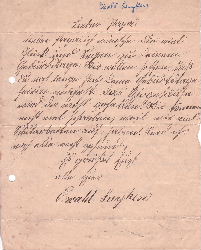Luyken Family Association
Ewald Luyken (1874-1957)
|
• Name index • Home • Contact • German On Ewald Luyken: • Biography • Picture gallery • Letters • Links Ludwigshafen, 19.12.2013 |
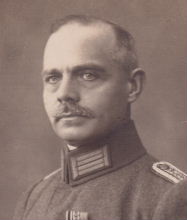
|
|
Wilhelm Louis Ewald Luyken, Generation 10, Ref.Nr. 10-069 (BK0929) Branch WB-O Born: 19.6.1874 in Rüthen, Westphalia (Germany) Died: 4.7.1957 in Stolberg/Harz (Age: 83 years) Occupation: Physician Father: Otto Luyken Mother: Hulda Hassel Spouse: Elisabeth Niemöller Married: 2.8.1905 in Enger, Westphalia (Germany) Children: • Hans Luyken (1906-1977) • Liselotte Luyken (1908-2010) • Hildegard Luyken (1911-1998) • Margarete Luyken (1914-2011) |
|
Biography Ewald Luyken
The following text essay appeared in September 1988 in the official bulletin of the community of Stolberg/Harz
(Germany):
The Development of the Community Health in Stolberg (Harz)
In the year of 1904 came the then 30 year old Dr. med. Ewald Luyken as a court physician to Stolberg in the Harz. He opened
a medical practice and took over the medical attendance of the Pastor Müller Foundation. His working area, which ever grew,
included Stolberg, Schwenda, Hayn, Breitenstein Straßburg and Rothleberode. Liselotte Hetzer, who at 98 bears her age well, wrote following comments on the above article: Father Ewald Luyken had three siblings: A brother Hermann and two sisters who both died as children from diphteria, Wilhelmine as a ten-year-old and Ida as an eight-year-old. Father remembered in which form he had been told avout the death. A maid received him coming from children-school, "yours daughter is dead". This directness greatly affected him. He later told us about it sympathetically. He himself always tried to prepare people above all if there were bad news to be told. Father worked together with his brother Hermann in the own agriculture. But as only one could live from agriculture the younger inheritors received almost nothing. When once family visit came in, they said: "What are your children actually doing in the evening? They have light on until late." Father hadn't realized this, so he went one evening into their room and found them learning, above all ancient languages, Latin and Greek. When asked he replied he was fond of ancient languages. Agriculture wouldn't suffice him. The brothers had only the "one year old". Thus the vistors achieved that my father made his grammar school in Moers after 4 years pause and went on to study medicine. If not as a non-inheritor he would have had to search for a woman who needed a man who would help her in agriculture - there he would not have had much to say. Or it stayed that way, then he would be dependent on the decisions of the older brother. As a rule the sons learnt a trade, the daughters needed a dowry with furniture: Living- and sleeping room, salon, kitchen, clothes, appliances. Both was expensive so one saved early. The earlier one began to save the less one had to pay for the monthly contributions. Social grade: Academics were very respected, were addressed with the title: In der Regel erlernten die Söhne einen Beruf, die Töchter brauchten eine Aussteuer mit Möbeln: Wohn-, Schlafzimmer, Salon, Küche, Wäsche, Gebrauchsgüter. Beides war teuer, so wurde schon früh gespart. Je früher man mit dem Sparen begann, desto weniger brauchte man zurückzulegen bei den monatlichen Beiträgen. Gesellschaftliche Stellung: Akademiker waren sehr angesehen, wurden mit dem Titel angeredet, die Frauen auch "Frau Doktor, Frau Geheimrat", wurden in den Läden bevorzugt behandelt, zuerst gegrüßt, Kinder machten Hofknicks. Wir waren gehobene Bürger, verkehrten untereinander mit Einladungen oder Gesellschaften. In Stolberg hielten sich solche Bräuche länger. Wollte man in "die Gesellschaft", machte man Besuche, die meist mit der Konfirmation anfingen. Besuch machen hieß: Etwa 10 Minuten Dauer; wenn nicht zu Hause, Visitenkarte abgeben (für jeden eine!). Dann erfolgte Gegenbesuch, etwa sonntags zwischen 11 und 13 Uhr. Danach kam eine Einladung: Frau Geheimrat Bode fragte gleich: "Wer ist miteingeladen?", wehe, wenn's unter ihrem Milieu war! Bei der Einladung gab es Kaffee und Kuchen. Ich musste als Tochter servieren: Anbieten von links, Aufgeben von rechts, Teller Wegnehmen von rechts. Nun, wie Vater nach Stolberg kam: In Stolberg hatten wir ein Fürstenhaus. Als der Fürst starb, wurde sein Sohn Nachfolger. Es war wohl alles für ihn ungünstig - so fand man ihn bald tot im Park erschossen. Er hinterließ seine Frau und zwei Kinder: dreijährig Imagina und einjährig Wolff Heinrich. Die Fürstin wollte ihre Kinder in guter Obhut erhalten und suchte einen Arzt. Kinderärzte gab es damals noch nicht. Sie wandte sich an Professor Fehling nach Straßburg. Bei diesem famulierte mein Vater, um sicher zu werden. Er unterrichtete ihn von dem Angebot. Mein Vater fuhr hin, um sich's anzusehen.Es gefiel ihm, so wurde er "Hofarzt" und durfte auch die Bevölkerung ärztlich versorgen. Stolberg war damals eine Stadt mit nur 2.000 Einwohnern. Der nächste Bahnhof 6.3 km entfernt. Der damalige Graf hatte nicht erlaubt, die Eisenbahn weiter zu bauen. "Der Frieden des Waldes sollte nicht gestört werden." Da der Wald ihm gehörte, gab es damals kein Mittel, gegen seinen Willen eine Eisenbahn zu bauen. Inzwischen gab's eine neue Bestimmung. Die Stolberger waren nicht mehr Untertanen. Für den Verlust wurde der Graf zum Fürsten erhoben mit dem Titel "Durchlaucht". Als es dann möglich war, begann man mit dem Eisenbahnbau. Wir Kinder lernten Bagger kennen, standen vor diesem technischen Wunder. 1925 fuhr ich erstmalig mit der Bahn bis Stolberg, musste damals um eine Karte nach Stolberg kämpfen, weil die Station noch nicht allgemein bekannt war. Eine Aufbewahrung für Koffer gab's noch nicht; das Gepäck ging in der Übergangszeit nach Rothleberode. Als ich in Stolberg ankam, war mein Koffer nicht da, er war nach Rothleberode gegangen. Also reklamierte ich, dann kam der Koffer mit der nächsten Bahn nach Stolberg. Nun aber war ich nicht am Bahnhof, so ging er wieder nach Rothleberode zurück. Da nahm sich mein Vater der Sache an, bestellte den Koffer, wir konnten ihn dann bei dem nächsten Zug in Empfang nehmen. Da war ich recht froh, denn das Gepäck wurde damlas bestohlen, wenn nicht gar gestohlen. |
Top of page / German
Picture Gallery Ewald Luyken
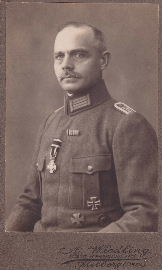 |
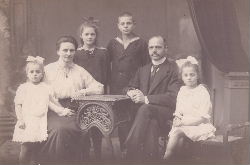 Stolberg, 22.2.1920 Grete, Elisabeth, Liselotte, Hans, Ewald and Hildegard |
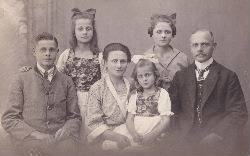 Stolberg, 1922 Hans, Hildegard, Elisabeth, Grete, Liselotte and Ewald |
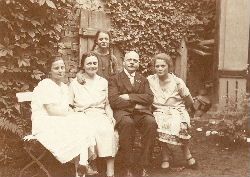 Stolberg, 25.7.1926 Hildegard, Elisabeth, Grete, Ewald and Liselotte |
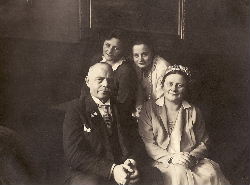 Silver wedding Stolberg, 2.8.1930 Ewald, Liselotte, Hildegard and Elisabeth |
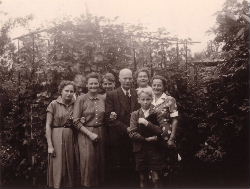 Oldenburg, 1953 I., H., Liselotte,W., Ewald, Siegtraut, Hildegard and H., |
 |
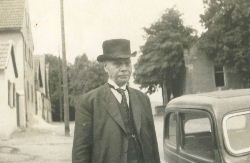 |
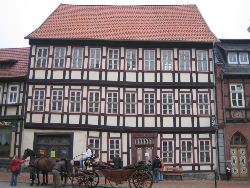 Stolberg, 2005 Ewald's house |
Top of page / German
|
Letters Ewlad Luyken
|
Top of page / German
|
Links Ewald Luyken
Internal links |
Top of page / German
